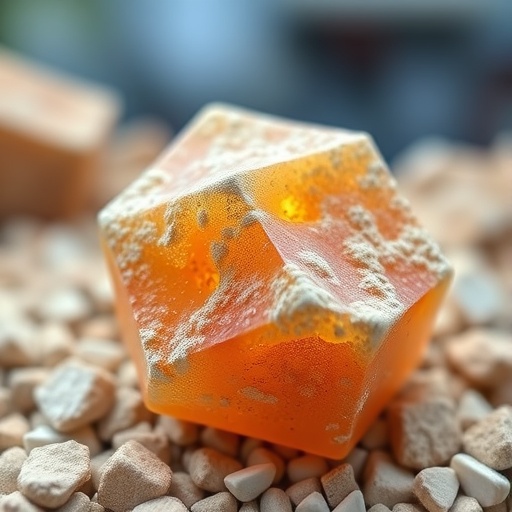In the realm of industrial catalysis, zeolites have long been celebrated for their unique ability to confine molecules within their intricate nano-channels. These minute pathways not only govern molecular diffusion but also influence the behavior and migration of metal clusters embedded within, making zeolites invaluable for enhancing catalyst activity, selectivity, and operational stability. Despite such practical significance, a comprehensive theoretical framework that rigorously characterizes the intertwined mechanisms of molecular transport and catalytic reaction within these confined environments has remained elusive, posing a formidable challenge for catalyst design.
Addressing this fundamental knowledge gap, a collaborative research effort spearheaded by Prof. LIU Zhongmin and Prof. YE Mao at the Dalian Institute of Chemical Physics (DICP), Chinese Academy of Sciences, alongside Prof. BAO Xiaojun and Prof. ZHU Haibo from Fuzhou University, has unveiled a pioneering theoretical model. Published recently in Nature, this model meticulously delineates the migration and aggregation behavior of metal clusters within individual zeolite crystals, marking a milestone in our understanding of confined catalytic processes at the nanoscale.
Central to their investigation were advanced first-principles simulations, which allowed the group to probe the kinetics of metal cluster motion and congregation within the nanoporous framework of silicate-1 (S-1), a zeolite renowned for its uniform pore architecture. Unlike previous studies where metal cluster behavior was often treated as a black box, this work quantitatively links the crystal size and spatial confinement of S-1 to the evolving distribution and dynamic aggregation of metal species inside its channels.
Key revelations from this model emphasize how the S-1 crystal size acts as a crucial regulatory parameter controlling two competing aggregation pathways of metal clusters. On the one hand, surface aggregation leads to the growth of larger metal nanoparticles characterized by diminished catalytic activity. On the other, aggregation within the nanopores favors the formation of ultra-small sub-nanometer metal clusters, which retain heightened catalytic performance. This dualistic behavior underscores the delicate balance steered by the zeolite’s confinements, dictating catalyst stability and reactivity.
Further experimental validation of the model came through sophisticated in situ high-spatial-resolution spectroscopic techniques, which captured the real-time spatial distribution and state of migrating metal clusters. These characterizations substantiated the theoretical predictions, offering robust confirmation that manipulating zeolite crystal dimensions can fine-tune metal cluster behaviors at atomic scales, a breakthrough for tailoring catalyst lifetimes and efficacy.
Remarkably, the researchers uncovered that when the b-axis length of S-1 exceeds a critical threshold of approximately 2 micrometers, Pt species are driven to migrate over extended distances within the zeolite structure. This extended migration path preferentially causes Pt atoms to cluster inside the nanopores themselves rather than on external surfaces. The resultant sub-nanometer Pt clusters become effectively immobilized within these confined channels, thereby preventing irreversible aggregation into larger, less active particles that typically deactivate catalysts over time.
Leveraging these insights, the team proposed an innovative design strategy termed "migration-aggregation-self locking," capitalizing on the controlled growth of zeolite crystal size to trap active metal species within nanopores. Implementing this approach, they developed an ultra-stable Pt-Sn@MFI catalyst with significantly improved durability for propane dehydrogenation—a critical industrial transformation for propylene production. The increased catalyst lifespan stemming from this nanoscale migration control holds substantial promise for practical catalytic processes.
This work carries profound implications not only for the petroleum and chemical industries but also for the broader field of heterogeneous catalysis. By providing a mathematical and conceptual framework contextualizing metal cluster behavior within confined nanopores, it invites future catalysts design strategies grounded in precise nano-confinement engineering. It paves the way for more predictable, durable, and selective catalyst systems, moving beyond empirical trial-and-error towards mechanistic rationality.
Moreover, the study exemplifies the power of coupling high-fidelity computational simulations with cutting-edge spectroscopic methods to unravel complex physicochemical phenomena within solid-state structures. Through such integrative methodologies, it becomes feasible to bridge atomic-level understanding and macroscopic catalytic performance, a longstanding aspiration in catalysis science.
Reflecting on the broader scope, this development underscores the intricate interplay between catalyst support properties and active species dynamics. Zeolites, traditionally valued for their shape-selectivity, now emerge as active players in stabilizing atomically precise metal clusters, thanks to their tunable nano-porous architectures. This paradigm shift could herald a new generation of catalysts optimized at both structural and compositional levels.
In summary, the breakthrough theoretical model and accompanying experimental validation elucidate the mechanisms governing metal cluster migration and aggregation inside zeolite nanopores. By demonstrating the role of zeolite crystal size in orchestrating these nanoscale processes, the research offers a clear pathway to engineer catalysts that resist deactivation while maintaining exceptional activity. Such advances promise transformative impacts on catalysis technology and chemical manufacturing efficiency in the years ahead.
—
Subject of Research: Not applicable
Article Title: Pt migration-lockup in zeolite for stable propane dehydrogenation catalyst
News Publication Date: 28-May-2025
Web References: 10.1038/s41586-025-09168-8
Keywords: Zeolites, Catalysis




